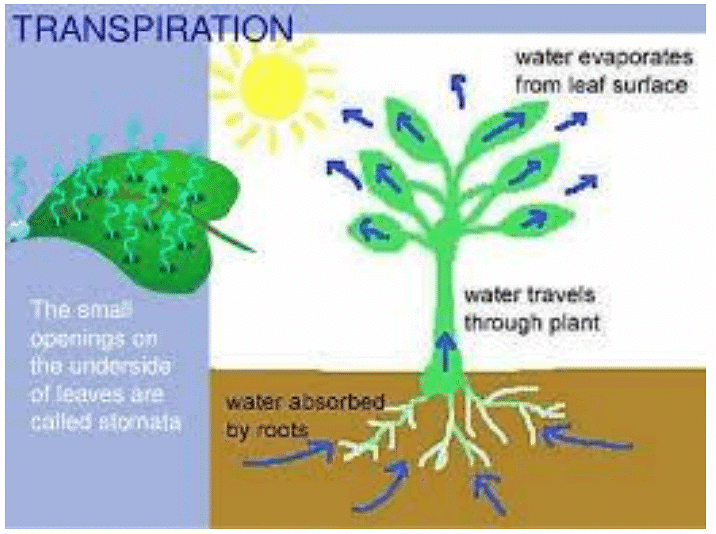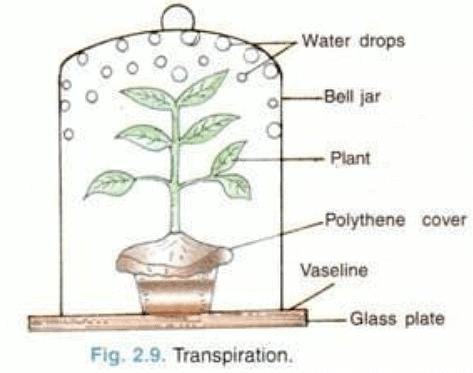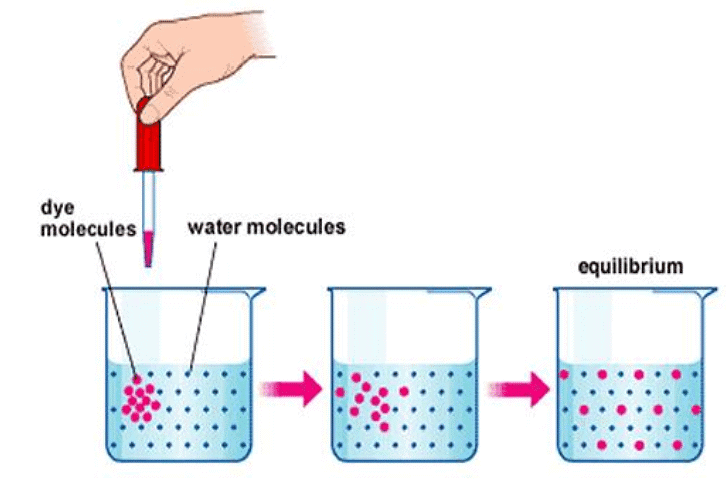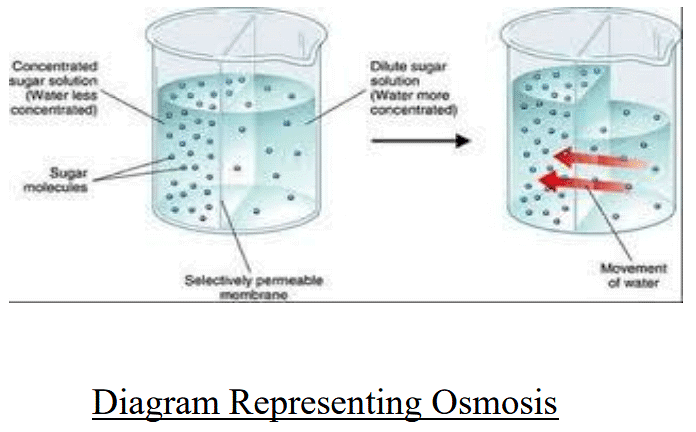UPSC Exam > UPSC Notes > Botany Optional for UPSC > Water Transport and Mineral Nutrition
Water Transport and Mineral Nutrition | Botany Optional for UPSC PDF Download
| Table of contents |

|
| Transport of Water and Minerals in Plants |

|
| Transpiration |

|
| Differences Between Xylem and Phloem |

|
| Osmosis, Diffusion, and Active Transport |

|
| Root Hairs |

|
Transport of Water and Minerals in Plants
- Plants acquire water and minerals through their roots.
- Root structures called root hairs play a crucial role in this process.
- Root hairs serve to increase the surface area of the root, facilitating the absorption of water and essential nutrients dissolved in it.
- These root hairs come into contact with water in the soil, which contains dissolved minerals.
- To understand how water moves from the roots to the leaves and what kind of transport system exists in plants, consider that plants possess specialized vessels for this purpose, creating a system akin to pipes.
- These vessels are composed of unique cells and form the plant's vascular tissue.
- The specific vascular tissue responsible for transporting water and nutrients is known as xylem.
- The xylem creates a continuous network of channels connecting the roots to the leaves through the stem and branches, ensuring the distribution of water throughout the plant.
- In addition to water and minerals, plants produce food in their leaves through a process called photosynthesis.
- To deliver this food to all parts of the plant, another vascular tissue, called phloem, comes into play.
- In essence, both xylem and phloem function as the plant's transport system, facilitating the movement of substances crucial for its growth and sustenance.
Transpiration
- Transpiration is a natural process through which plants release excess water in the form of water vapor.
- This process primarily occurs through small openings, known as pores or stomata, found on the surface of leaves.
- An astonishing 99% of the water absorbed by a plant is lost through transpiration.
- Stomata play a vital role in facilitating transpiration by controlling the opening and closing of these tiny openings. This regulation is managed by specialized cells called guard cells.


Experimental Setup Explanation
- In an experiment described above, a potted plant was enclosed within a bell jar.
- The edges of the bell jar were sealed with Vaseline. This was done to prevent any loss of water through transpiration from the sealed areas.
- The soil in the pot was covered with a polyethylene bag. This was done to ensure that only the water released by the plant reached the surface of the bell jar, and not the water present in the soil.
Observation
- After leaving the setup undisturbed for a day, the next day, water droplets were observed on the surface of the bell jar.
Explanation of Water Droplets
The presence of water droplets on the surface of the bell jar can be explained as follows:
- During transpiration, water vapor released by the plant enters the air inside the bell jar.
- When the air inside the bell jar cools down, such as during the night, the water vapor condenses into liquid water on the inner surface of the bell jar.
- This condensation occurs because the air inside the sealed bell jar cannot exchange moisture with the external environment, leading to a buildup of humidity and subsequent condensation on the cooler surfaces.
Factors Affecting Transpiration
Transpiration, the process by which plants lose water vapor from their leaves and other aerial parts, is influenced by various factors. Here are the key factors affecting transpiration:
- Temperature: Transpiration rates generally increase with higher temperatures. Warm temperatures lead to the expansion of water molecules, making it easier for them to evaporate from leaf surfaces.
- Relative Humidity: The level of moisture in the air, or relative humidity, affects transpiration. Higher relative humidity reduces the rate of transpiration because the air already contains a significant amount of moisture, making it less favorable for water vapor to escape from the plant.
- Light: Intense light can stimulate stomatal opening, increasing transpiration rates. In contrast, low light conditions or darkness lead to stomatal closure, reducing transpiration.
- Wind: Air movement or wind can enhance transpiration by carrying away water vapor near the leaf surface, creating a gradient that encourages further water loss.
- Plant Species: Different plant species have varying transpiration rates due to differences in leaf characteristics, such as size, shape, and the density of stomata.
- Leaf Characteristics: Leaf size, shape, surface area, and the presence of a waxy cuticle can influence transpiration rates. Larger leaves with more surface area tend to transpire more.
- Soil Moisture: The availability of soil moisture affects transpiration. When soil moisture is abundant, plants can transpire at higher rates. Conversely, water-stressed plants may reduce transpiration to conserve water.
- Soil Type: Soil composition and texture play a role in transpiration. Sandy soils drain quickly and may lead to more frequent transpiration, while clayey soils retain water for longer periods, potentially reducing transpiration rates.
- Plant Age: Younger plants may have lower transpiration rates compared to mature plants, as they have smaller leaves and less developed root systems.
- Stomatal Regulation: Stomata are tiny openings on leaf surfaces that control transpiration. When stomata are open, transpiration rates increase, and when they are closed, transpiration decreases. Stomatal behavior is influenced by factors such as light, humidity, and carbon dioxide levels.
- Atmospheric Pressure: Changes in atmospheric pressure can affect transpiration rates. Lower air pressure, as might occur at higher altitudes, can lead to increased transpiration.
- Drought Stress: During periods of drought or water scarcity, plants often reduce transpiration by closing their stomata to conserve water.
- CO2 Concentration: Elevated carbon dioxide (CO2) levels can affect transpiration. Some plants may reduce their transpiration rates under higher CO2 concentrations, as they can achieve the same photosynthetic rates with fewer stomatal openings.
- Hormones: Plant hormones, such as abscisic acid (ABA), play a role in regulating transpiration. ABA is produced in response to water stress and can induce stomatal closure to reduce water loss.
Conducting Tissues or Vascular Tissues
- In the world of plants, two crucial conducting tissues are known as xylem and phloem.
- Xylem primarily facilitates the transportation of water, while phloem is responsible for the movement of food.
- Xylem comprises various components, including tracheids, vessels, fibers, and parenchyma cells.
- On the other hand, phloem is composed of sieve tubes, companion cells, parenchyma cells, and phloem fibers.
Differences Between Xylem and Phloem
- Function: Xylem is responsible for transporting water and minerals from the roots to other parts of the plant. In contrast, phloem's main function is to transport the food (sugars produced through photosynthesis) from the leaves to various plant tissues.
- Components: Xylem consists of tracheids, vessels, fibers, and parenchyma cells, while phloem comprises sieve tubes, companion cells, parenchyma cells, and phloem fibers.
- Direction of Flow: Xylem conveys water and minerals in an upward direction, from the roots to the rest of the plant. Phloem transports food in multiple directions, including upward (from leaves to other parts) and downward (from source to sink tissues).
- Cell Types: Xylem cells, such as tracheids and vessels, are non-living cells with thick walls, while phloem cells, like sieve tubes and companion cells, are mostly living cells with thinner walls.
- Supportive Role: Xylem also plays a structural role by providing support to the plant. It aids in maintaining plant rigidity and helps in counteracting the force of gravity. Phloem does not have a significant structural function.
- Composition: Xylem contains lignin in its cell walls, which provides rigidity and makes it less flexible. In contrast, phloem lacks lignin and is more flexible.
- Transported Substances: Xylem transports primarily water and inorganic ions, whereas phloem transports organic compounds, mainly sugars (sucrose).
Note: Semi permeable membrane is a membrane that allows movement of solvent ( water) molecules through it but does not allow movement of solute(salt and sugar) molecules through it.
Osmosis, Diffusion, and Active Transport
- Diffusion is the natural movement of molecules or particles from an area where they are in higher concentration to an area where they are in lower concentration until an equilibrium is reached. For instance, if you spray a fragrance in one room, the scent can diffuse into other parts of the house. In the context of plants, diffusion is vital for the absorption of minerals.

- Osmosis is a specific type of diffusion involving water molecules. It occurs when water molecules move through a semipermeable membrane from an area of higher water concentration to an area of lower water concentration.
In plants, osmosis plays a crucial role in several ways:
i. Water enters plant root cells through osmosis and subsequently moves into specialized tubes called xylem vessels. These vessels transport water to the leaves.
ii. Since plant roots have a higher concentration of water than the surrounding soil, water flows into the roots through osmosis.

- Active Transport, in contrast to diffusion, involves the movement of molecules against their concentration gradient, from an area of lower concentration to an area of higher concentration. This process requires energy. In plants: i. Minerals are transported from regions of lower concentration (such as the soil) to regions of higher concentration (such as the root cells). This movement is opposite to diffusion and is known as active transport. ii. Active transport in plants necessitates energy, which is obtained from the process of respiration.
Note:
- Above three processes help the plant to absorb water and minerals from the soil.
- Diffusion and active transport help in mineral absorption whereas osmosis helps in water absorption.
- Transpiration process in plants creates a suction force which pulls up water from xylem of roots to the stem and then to the leaves. This is called ascent of sap and the pull generated by the transpiration is called transpiration pull.
Root Hairs

- Shown above is an enlarged view of a root hair, which is an elongated projection of a plant cell.
- Within this cell, there is a fluid known as cell sap, which has a higher concentration of solutes compared to the surrounding soil water.
- The root hair is enveloped by an extremely thin cell membrane. This membrane permits the passage of water molecules while obstructing larger molecules. As a result, water from the soil is able to enter the root hairs through the process of osmosis.
Absorption of water by roots

- During the process of water absorption, water enters the root system through the thin surface of specialized structures known as root hairs via osmosis.
- Subsequently, the water moves from one cell to the next through a process called cell-to-cell osmosis, which allows it to progress further into the root.
- This sequence of water movement continues until the water eventually reaches the xylem, a vascular tissue specialized for transporting water and minerals.
- The pressure developed in the roots as a result of this water absorption is referred to as root pressure.
- This absorption process occurs along a concentration gradient, where water moves from areas of higher concentration (in the soil) to areas of lower concentration (inside the plant roots). Because it relies on the natural movement of molecules from high to low concentration, this process is termed passive transport.
Plant Nutrients
Similar to animals, plants also need nutrients to support their growth and development.
These essential nutrients are categorized as follows:
- Essential Elements: There are a total of 17 essential elements that plants require for their well-being. Among these, carbon, oxygen, and hydrogen are considered non-mineral elements because they are primarily derived from sources other than minerals. The remaining 14 elements are classified as mineral elements.
- Mineral Elements: These 14 essential elements are further categorized based on their function and importance for plants:
- Macronutrients: These are nutrients that plants require in relatively large quantities.
- Nitrogen (N)
- Phosphorus (P)
- Potassium (K)
- Calcium (Ca)
- Magnesium (Mg)
- Sulfur (S)
- Micronutrients: Also known as trace elements or minor elements, these are nutrients that plants need in smaller quantities compared to macronutrients. However, they are still crucial for plant health.
- Iron (Fe)
- Manganese (Mn)
- Zinc (Zn)
- Copper (Cu)
- Molybdenum (Mo)
- Boron (B)
- Chlorine (Cl)
- Nickel (Ni)
- Macronutrients: These are nutrients that plants require in relatively large quantities.
The document Water Transport and Mineral Nutrition | Botany Optional for UPSC is a part of the UPSC Course Botany Optional for UPSC.
All you need of UPSC at this link: UPSC
|
179 videos|143 docs
|
FAQs on Water Transport and Mineral Nutrition - Botany Optional for UPSC
| 1. What is transpiration in plants and how does it contribute to water and mineral transport? |  |
Ans. Transpiration is the process by which plants lose water vapor through their leaves. It occurs through tiny pores called stomata. Transpiration plays a crucial role in the transport of water and minerals in plants. As water evaporates from the leaves, it creates a pull or suction force that helps in the upward movement of water through the xylem vessels. This process is known as the transpiration pull, which allows water and dissolved minerals to be transported from the roots to the rest of the plant.
| 2. What are the differences between xylem and phloem? |  |
Ans. Xylem and phloem are two types of vascular tissues in plants that are responsible for the transport of water, minerals, and organic substances. The main differences between xylem and phloem are:
- Xylem primarily transports water and minerals from the roots to the rest of the plant, while phloem transports organic substances like sugars from the leaves to other parts of the plant.
- Xylem is composed of dead cells, whereas phloem is made up of living cells.
- Xylem vessels are long and tubular, allowing for efficient water transport, while phloem consists of sieve tubes and companion cells.
- Xylem is unidirectional, moving water and minerals upwards, while phloem can transport substances in both upward (source to sink) and downward (sink to source) directions.
| 3. What are osmosis, diffusion, and active transport, and how do they contribute to water and mineral transport in plants? |  |
Ans. Osmosis, diffusion, and active transport are three processes involved in the movement of water and minerals in plants:
- Osmosis: It is the movement of water molecules across a selectively permeable membrane from an area of higher water concentration to an area of lower water concentration. Osmosis helps in the absorption of water by the root hairs, allowing it to enter the plant's vascular system.
- Diffusion: It is the movement of molecules from an area of higher concentration to an area of lower concentration. Diffusion is responsible for the movement of minerals from the soil into the root cells by following a concentration gradient.
- Active transport: It is the movement of ions or molecules across a cell membrane against the concentration gradient, requiring energy expenditure. Active transport is essential for the uptake of minerals by the root cells, as it allows them to accumulate minerals even when their concentration in the soil is lower.
These processes work together to ensure the proper uptake and transport of water and minerals in plants.
| 4. How do root hairs contribute to water and mineral nutrition in plants? |  |
Ans. Root hairs are tiny, finger-like projections that extend from the surface of root cells. They significantly increase the surface area of the root and play a crucial role in water and mineral nutrition in plants.
Root hairs are responsible for the absorption of water from the soil. They create a large contact area with the soil particles, allowing for efficient uptake of water through osmosis. The thin cell walls of root hairs also facilitate the movement of water into the root cells.
Moreover, root hairs are involved in the uptake of minerals from the soil. They actively transport ions from the soil into the root cells through various transport proteins. This process is essential for the plant's overall mineral nutrition and growth.
| 5. How does water transport and mineral nutrition contribute to the overall growth and development of plants? |  |
Ans. Water transport and mineral nutrition are crucial for the overall growth and development of plants. Here are the key contributions:
- Water transport provides the necessary hydration for cellular processes, allowing for photosynthesis, respiration, and other metabolic activities to occur efficiently.
- Water acts as a medium for the transport of minerals, which are essential for various physiological functions in plants. Minerals are involved in enzyme activation, protein synthesis, cell division, and overall plant growth.
- Adequate water and mineral uptake ensure the turgidity of plant cells, maintaining their structural integrity and allowing for proper growth and development.
- Water and mineral transport also play a role in the regulation of stomatal openings, which control gas exchange and transpiration in plants.
- Proper water and mineral nutrition contribute to the development of healthy roots, stems, leaves, flowers, and fruits, ultimately leading to optimal plant growth, reproduction, and yield.
Related Searches














